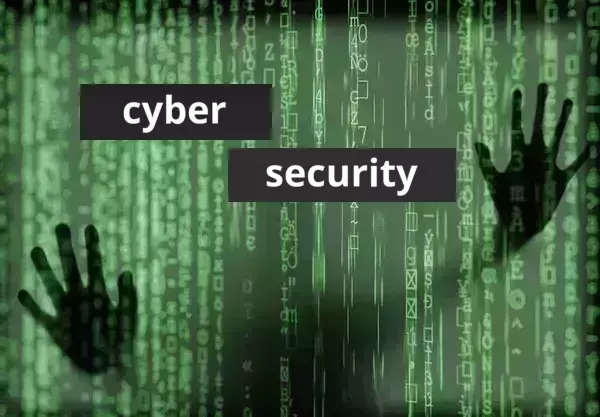In today’s digital age, cyber security is of utmost importance. With more and more businesses relying on software applications to run their operations, ensuring the security and reliability of these programs has become a crucial task.
This is where cyber security audit comes into play. In this blog, we will discuss the basics of cyber security audits and provide you with a comprehensive checklist to ensure that your organization is secure and protected against cyber threats.
From identifying vulnerabilities to implementing necessary controls, this checklist will help you conduct an effective cyber security audit that safeguards your business from potential risks. So, let’s dive right in!
Why Conduct a Cyber Security Audit Checklist
The importance of software security cannot be understated, especially in today’s digital age where data breaches and cyber attacks are becoming more prevalent. That’s why it’s crucial to conduct a cyber security audit to ensure that your systems remain protected and safe from any potential threats.
In this blog section, we explore the reasons why conducting a cyber security audit checklist is essential. By identifying the scope of the audit, potential threats, and assessing the current IT security state, you can pinpoint areas of weakness and address requirements specific to your organization. Regularly scheduled security testing can also help ensure that your systems remain secure.
The blog also emphasizes the importance of keeping your systems up-to-date and using software and hardware defenses to detect and prevent attacks. Additionally, the section provides best practice advice and recommendations for improving your software security.
We believe it is important to note that one of the best options for securing your software and digital business as a whole is an audit by an independent third-party company that will take your cybersecurity checks to the next level. It is necessary to consider that professionalism and compliance with modern certificates of audit quality are the key factors when choosing a contractor. For example, we recommend cyber security consulting from Softseq.
The 6 Main Steps to Conduct a Cyber Security Audit
- Assessing Cybersecurity Threats: The first step in a cyber security audit is to evaluate the existing cybersecurity risks. To detect future threats, the company must examine historical cybersecurity patterns and incidents.
- Evaluating the Audit Report: When the audit has been completed, the recorded report and audit results must be analyzed. This procedure entails verifying that HIPAA, PCI-DSS, or SOX data security rules are being followed.
- Unauthorized Software Control: The company must detect and delete any unauthorized software that is present in their infrastructure. This unlicensed software might create weaknesses that hackers can take advantage of.
- Performing In-House Software Audits: In-house software audits should be done at least twice a year. This audit technique is required to guarantee that the systems are secure against vulnerabilities and hackers.
- Checking Password Strength: To prevent data breaches, the team must use the strongest passwords possible and follow strict security procedures.
- Verifying Hard-Coded Credentials: Serious security lapses may have been caused by hard-coded credentials. Thus, it is crucial to examine how hard-coded credentials are used during a software security audit.
Organizations must prioritize and routinely carry out cyber security audits. Organizations may maintain their security requirements and safeguard their sensitive data by taking the following six measures.
Define the Scope of the Audit
By determining the purpose of the audit, the checklist will contain items that align with the objectives of the organization. This step will guide the entire audit process and ensure that the security audit checklist will cover all necessary aspects.
The scope of the audit will often depend on the size of the organization and the type of software that they use. It is essential to understand the company’s IT systems, including their network architecture, software, and hardware components. This knowledge will increase the accuracy of the audit and help identify potential vulnerabilities.
Defining the scope of the audit will help to create a roadmap for the audit process. It will allow the team to know where to start, which areas to focus on, and the resources required to perform the audit. It will also help to stay on track and to ensure that the security audit checklist covers all required components.
Having clearly defined objectives for the cyber security audit checklist is a crucial step in achieving the desired results. It will allow the audit team to work more efficiently and effectively, providing a comprehensive assessment of cyber security. This will make it easier to implement the necessary changes to improve the overall security of the IT system.
Operating System Update
An essential part of any cyber security audit checklist is ensuring that all operating systems are up-to-date with the latest patches and updates. While automatic updates are available for most operating systems, it is crucial to check regularly to ensure that all systems are current and secure.
By regularly updating operating systems, businesses can protect against the latest cyber threats and vulnerabilities in the software. Outdated systems can leave a business open to cyber-attacks and data breaches, which can be costly and damaging to the reputation of the organization.
Conducting a cyber security audit should include examining the current state of operating system updates and implementing measures to ensure regular updates. It is also vital to have a clear plan in place for addressing any issues identified during the audit.
List Out Potential Threats
By making a list of all the possible threats, you can prioritize which risks are the most significant and start working on mitigating them. Common threats can include malware, phishing attacks, insecure passwords, denial-of-service attacks, and more. Identifying these threats gives you a clear understanding of your security posture and enables you to put effective measures in place to prevent them from occurring.
Once you’ve listed all the potential threats, you need to assess the likelihood of each one occurring. This step is crucial because it helps you focus your resources on the most likely attack scenarios. By prioritizing those high-potential risks, you can allocate your resources and budget to the areas that need it the most.
By going through this process, you’ll have a better understanding of the types of attacks that could occur in your environment; you can then tailor your security measures to prevent such attacks.
Identifying Areas of Weakness
Once you’ve defined the scope of your cyber security audit checklist and ensured your operating system is up-to-date, it’s time to assess your current IT security state. This step is crucial in identifying any areas of weakness in your system before they can be exploited by cybercriminals.
To begin, it’s essential to have a thorough understanding of your organization’s current cybersecurity measures. Are existing security protocols being followed? Are employees aware of the latest threats and preventative measures? Regular discussions on the current IT security landscape and phishing drills help ensure that everyone remains vigilant against new and evolving attacks.
The assessment process should also consider potential vulnerabilities in your system. Common areas of concern include outdated software, unsecured networks, and inadequate authentication methods. Making a comprehensive list of potential threats helps to identify areas where security measures need to be bolstered.
An important aspect of this evaluation is prioritizing improvement opportunities. Some vulnerabilities may require immediate attention, while others may pose a lower risk. By prioritizing improvements, organizations can ensure that resources are allocated effectively.
Regular security testing is another crucial step in maintaining IT security. Regularly scheduled testing, such as penetration testing, can help identify new threats and vulnerabilities before they become a problem. With the increasing risk of cyber attacks, continuous security testing is no longer an option but a necessity.
Addressing specific security requirements is another essential component of a cyber security audit checklist. Each organization has its own unique security needs. Assessing your requirements and implementing measures that meet your specific needs can significantly reduce the risk of a successful cyber attack.
Finally, it is important to take a proactive approach to software security. Implementing software and hardware defenses is key to detecting and preventing attacks. Firewalls, anti-virus software, and intrusion detection systems all play a role in keeping your systems secure.
Regularly Scheduled Security Testing
The importance of regularly scheduled security testing cannot be overstated. As discussed in previous sections, identifying potential threats and assessing the current IT security state are crucial steps in ensuring the safety of your software systems. However, without regular assessments, vulnerabilities can go undetected and undressed, leaving your systems open to attack.
Regular security testing not only helps to identify new potential threats, but also helps to ensure that previous vulnerabilities have been adequately addressed. By establishing a regular testing schedule, you can keep your systems up-to-date and minimize the risk of future cyberattacks.
In addition to helping you stay proactive in the face of new threats, regularly scheduled security testing can also help you meet compliance requirements. Many industries have strict regulations governing the security of sensitive information, and regular testing is often a required component of compliance.
While regular security testing may seem like a significant investment of time and resources, the alternative can be much more costly. Failure to detect and address vulnerabilities can result in costly breaches and legal penalties, not to mention damage to your organization’s reputation.
Addressing Your Requirements
In addressing specific security requirements, it is essential to customize the cyber security audit checklist to meet a business’s needs. This step is critical in ensuring that a business’s security concerns are addressed adequately. The audit should assess the system’s physical configuration, environment, software, information handling processes, and user access to identify areas of vulnerability.
With the identification of specific security needs, businesses can ensure that their security measures meet compliance standards and appropriate safeguards are put in place. This can range from the installation of firewalls to the use of anti-virus software and the implementation of strong password policies.
To maintain a secure system, regularly scheduled security testing is necessary to detect and prevent attacks. This is where the cyber security audit checklist comes to the fore. It permits businesses to list out potential threats, assess their current IT security state, and identify areas of weakness.
Additionally, hardware and software defenses play a vital role in security. Software defenses keep businesses’ systems safe by detecting and preventing attacks, while hardware defenses secure the system’s physical components.
Tools for Detecting and Preventing Attacks
The importance of software and hardware defenses cannot be overstated in cyber security. After identifying potential threats and assessing current weaknesses in your IT security, the next step is to implement tools and strategies to detect and prevent attacks.
Modern attacker tools can crack passwords as complex as 8 characters. Therefore, it is essential to ensure that all hardware, software, and firmware are updated and secure before being put on any network. Attack detection and prevention software and hardware defenses constitute key tools in this regard.
Intrusion detection and prevention mechanisms are prime examples of these defenses. Attackers can quickly circumvent such mechanisms and inject malicious code. However, it is possible to minimize error recurrence through frequent audit logging. Audit logging can help trace failures that may arise from hardware and software mishaps.
While assessing the IT security state of your organization, it is essential to recognize your specific security requirements. You should have a security policy in place that includes procedures to prevent and detect misuse. It should also have guidelines for conducting insider investigations. Meeting these requirements can entail employing software and hardware defenses that offer the necessary protection.
Recommendations for Improving Your Cyber Security: Best Practice Advice
In this section of the cyber security audit checklist, the focus is on the best practices that can be adopted to improve the security of your system. These recommendations will help you to mitigate potential risks and enhance your overall security posture.
One of the most important things to consider when it comes to improving your software security is staying up-to-date with the latest security patches and updates. As mentioned in Section 3, regular operating system updates can go a long way in ensuring the security of your systems.
In addition to updating your systems, it’s also crucial to have strong hardware and software defenses in place. Firewalls, antivirus software, and intrusion detection systems are some of the tools that can be used to detect and prevent attacks.
Another effective way to improve software security is by conducting regular security assessments. As mentioned in Section 6, regular testing can help you identify vulnerabilities and take corrective measures to prevent potential security breaches.
Conclusion
After going through a thorough cyber security audit checklist, it’s clear that ensuring your systems are up-to-date, identifying potential threats, and regularly assessing your IT security state is key to protecting your business from data breaches and other cyber threats. By meeting your specific security requirements and utilizing software and hardware defenses, you can detect and prevent attacks and keep your systems secure.
It is easy to fall prey to cybercriminals, making it essential to have a robust security system in place. The particular threats to data security evolve with technology, which is why regular assessments are crucial to identify potential vulnerabilities in your system. However, it’s not enough to run a one-time audit and call it a day. Keeping your systems secure requires ongoing attention, regular testing, and implementing best practices.
A cyber security audit checklist is an excellent resource for businesses to evaluate their IT security measures and identify areas of improvement. By following the steps outlined in the checklist, you can ensure that your systems are up-to-date, assess potential risks, and follow best practices for monitoring and protecting against cyber threats. Regularly scheduled security testing is also crucial, as threats can evolve quickly and require a swift response.
So, keeping your systems secure with a cyber security audit checklist requires consistent effort and attention to detail. However, by dedicating the time and resources to this process, you can keep your business safe from cyber threats and protect your valuable data. Don’t wait until it’s too late – start implementing the steps outlined in the checklist today.








